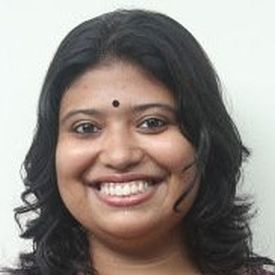How class and caste influence school choice
Families' socioeconomic status impacts how parents make decisions regarding their children's education. Taking into account the interplay of caste and class, this paper finds that when families are to...
- Articles
A permanent cordon-sanitaire: Dalits and Muslims in urban India
Near-perfect segregation and hierarchical ordering of residential space, based on caste or religious identity, is a well-known feature of rural India. Studies have also documented the persistence of s...
-
 Naveen Bharathi
Naveen Bharathi  Deepak Malghan
Deepak Malghan  Andaleeb Rahman
Andaleeb Rahman  09 October, 2020
09 October, 2020
- Articles
Are women politicians good for economic growth?
There has been a phenomenal global increase in the proportion of women in politics in the last two decades, but there is no evidence of how this influences economic performance. This article investiga...
-
 Sonia Bhalotra
Sonia Bhalotra  05 December, 2018
05 December, 2018
- Articles
Leveraging behavioural insights for informed policymaking
Application of behavioural insights – backed by decades of research in behavioural economics and social psychology – to the design and implementation of social programmes is gaining traction in I...
-
 Steven Walker
Steven Walker  03 December, 2020
03 December, 2020
- Perspectives
International day for the Elimination of Violence against Women
25 November is observed by the United Nations as the International day for the Elimination of Violence against Women. This year, there is a particular focus on the alarming increase in domestic violen...
-
 I4I Team
I4I Team  25 November, 2020
25 November, 2020
- Perspectives
Gender norms and competitiveness: Evidence from the tribes of Northeast India
The under-representation of women in leadership positions is often attributed to systematic gender differences in the inclination to compete. Do gender-balanced social norms have the potential to clos...
-
 Stefan Klonner
Stefan Klonner  Sumantra Pal
Sumantra Pal  Christiane Schwieren
Christiane Schwieren  24 November, 2020
24 November, 2020
- Articles
Mental health disparities in India
While a large, multidisciplinary literature focusses on disparities in physical health across social groups, the mental health dimension remains invisible. Analysing data from a WHO survey conducted i...
-
 Diane Coffey
Diane Coffey  Aashish Gupta
Aashish Gupta  Meghana Mungikar
Meghana Mungikar  13 November, 2020
13 November, 2020
- Articles
A road map for closing gender gaps in Bihar: Gender Responsive Budgeting
The state of Bihar was one of the early starters on Gender Responsive Budgeting in India, having published its first ‘Gender Budget Statement’ in 2008-09. Based on a review of the literature on th...
-
 Shrijna Dixon
Shrijna Dixon  Yamini Mishra
Yamini Mishra  03 November, 2020
03 November, 2020
- Perspectives
A permanent cordon-sanitaire: Dalits and Muslims in urban India
Near-perfect segregation and hierarchical ordering of residential space, based on caste or religious identity, is a well-known feature of rural India. Studies have also documented the persistence of s...
-
 Naveen Bharathi
Naveen Bharathi  Deepak Malghan
Deepak Malghan  Andaleeb Rahman
Andaleeb Rahman  09 October, 2020
09 October, 2020
- Articles
Does the gender of your co-worker matter? Evidence from call centres
Several theories suggest that gender integration in the workplace may have negative effects in gender-segregated societies. Based on an experiment conducted with 765 employees in call centres located ...
-
 Deepshikha Batheja
Deepshikha Batheja  05 October, 2020
05 October, 2020
- Articles
Nakusha: Son preference, ‘unwanted’ girls, and gender gaps in schooling
Indian society is commonly associated with a strong cultural preference for sons. Using nationally representative data from 1986-2017, this article examines parental investment in the education of son...
-
 Ashwini Deshpande
Ashwini Deshpande  Apoorva Gupta
Apoorva Gupta  25 September, 2020
25 September, 2020
- Articles
Atrocities, murders, and untouchability: Measuring caste-based discrimination
How can we best measure inter-caste tension and discrimination in India? In this post, Victoire Girard highlights the limitations of using statistics compiled under the Prevention of Atrocities Act, w...
-
 Victoire Girard
Victoire Girard  23 September, 2020
23 September, 2020
- Perspectives
Covid-19: ‘Shadow pandemic’ and violence against women
Violence against women is a problem worldwide, with economic costs ranging from 1% to 4% of global GDP. This article investigates if the magnitudes and types of violence against women have changed dur...
-
 Saravana Ravindran
Saravana Ravindran  Manisha Shah
Manisha Shah  17 September, 2020
17 September, 2020
- Articles
Demographic shocks and female labour force participation: Evidence from 1918 flu pandemic
The Influenza pandemic of 1918 killed about 5% of India’s population. This article finds that districts most adversely affected by influenza mortality saw a temporary increase in the country’s fem...
-
 James Fenske
James Fenske  Bishnupriya Gupta
Bishnupriya Gupta  Song Yuan
Song Yuan  17 August, 2020
17 August, 2020
- Articles
How mothers-in-law influence women’s social networks and reproductive health
Restrictive social norms and strategic constraints imposed by family members can limit women’s access to and benefit from social networks. Based on a survey in rural Uttar Pradesh, this article show...
-
 S Anukriti
S Anukriti  Catalina Herrera-Almanza
Catalina Herrera-Almanza  Mahesh Karra
Mahesh Karra  03 August, 2020
03 August, 2020
- Articles
Twitter feed
Tweets by Ideas4IndiaMost Popular Social Identity Posts
A division of labourers: Caste identity and efficiency in India
Castes in India are closely associated with certain occupations and determine the jobs done by millions. This study uses a new dataset to show that a large proportion of workers still work in their ca...
 Guilhem Cassan
Guilhem Cassan  Daniel Keniston
Daniel Keniston  Tatjana Kleineberg
Tatjana Kleineberg  18 November, 2022
18 November, 2022
- Articles
Hindu-Muslim fertility differentials in India: An update
Building on past research, Saswata Ghosh and Pallabi Das estimate the state- and district-level fertility differentials between Hindus and Muslims using data from the latest round of the NFHS. They sh...
 Pallabi Das
Pallabi Das  Saswata Ghosh
Saswata Ghosh  18 April, 2023
18 April, 2023
- Articles
Sex ratios and religion in India and South Asia
In South Asia, low child sex ratios are increasingly an isolated Indian phenomenon. Within India, child sex ratios are ‘normal’ among Christians and Muslims but much lower among Hindus, Sikhs, and...
 Swati Narayan
Swati Narayan  03 April, 2019
03 April, 2019
- Articles





 04 March, 2024
04 March, 2024






